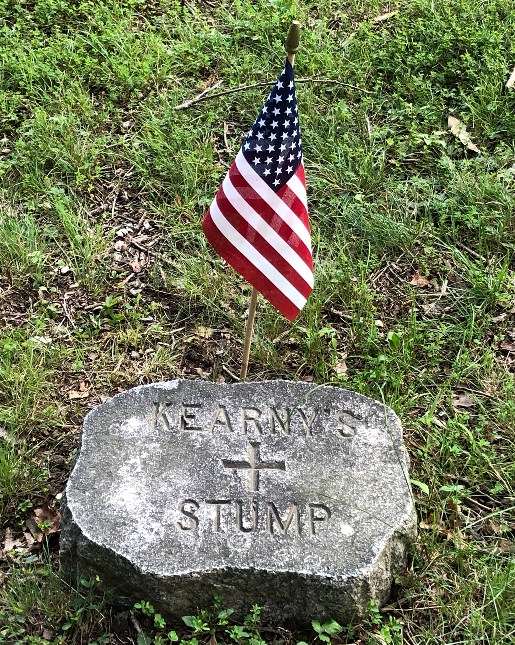Chantilly Main Page * Battle of Chantilly * Ox Hill Battlefield Park * The Armies
The wayside markers were erected in 2008 by the Fairfax County Park Authority along the Ox Hill Battlefield Park Interpretive Trail.
Boulders and Quartz Stone wayside marker
Stop number 5. Location: 38° 51.912′ N, 77° 22.208′ W.
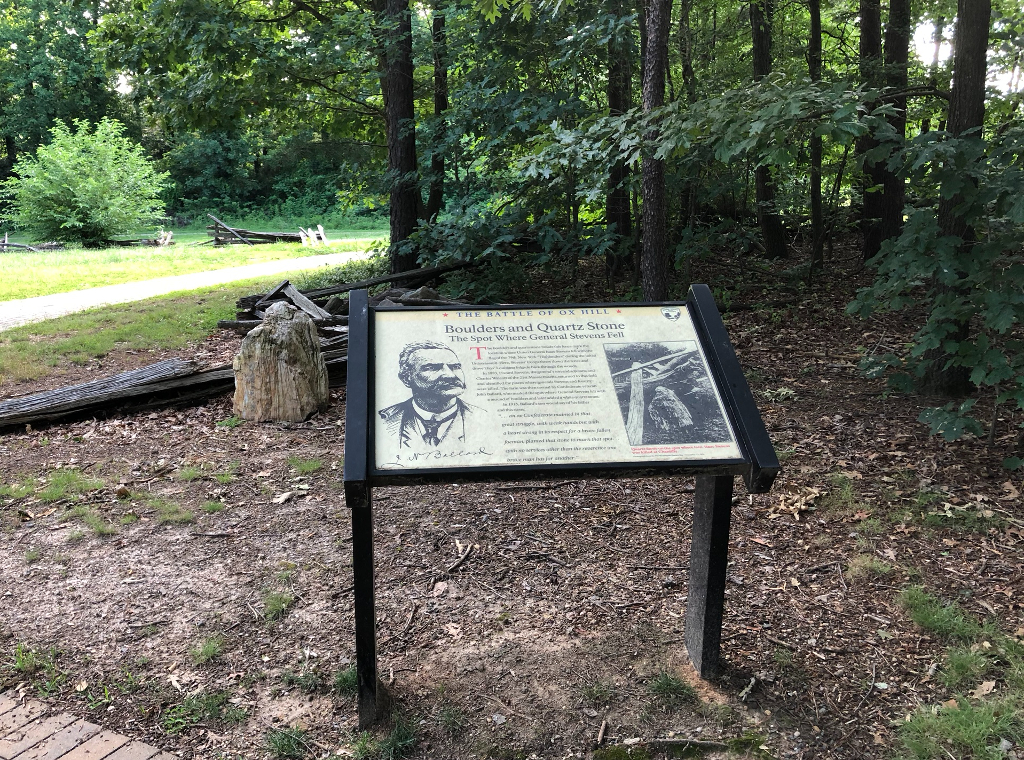
Boulders and Quartz Stone
The Spot Where General Stephens Fell
The boulders and quartz stone beside this fence mark the location where Union General Isaac Stevens fell with the flag of the 79th New York “Highlanders” during the initial Union assault. Here, Stevens’ troops threw down the fence and drove Hay’s Louisiana brigade back through the woods.
In 1883, Hazard Stevens, the general’s son and adjutant, and Charles Walcott of the 21st Massachusetts, returned to this field and identified the places where generals Stevens and Kearny were killed. The farm was then owned by Confederate veteran John Ballard, who marked the spot where General Stevens fell with a mound of boulders and later added a white quartz stone.
In 1915, Ballard’s son would say of his father and this stone,
…an ex-Confederate maimed in that great struggle, with weak hands but with a heart strong in respect for a brave fallen foeman, planted that stone to mark that spot… with no services other than the reverence one brave man has for another.”
Captions from the photograph:
Quartz Stone on the spot where Gen. Isaac Stevens was killed at Chantilly. Photograph from the Washington Sunday Star, November 13, 1921.
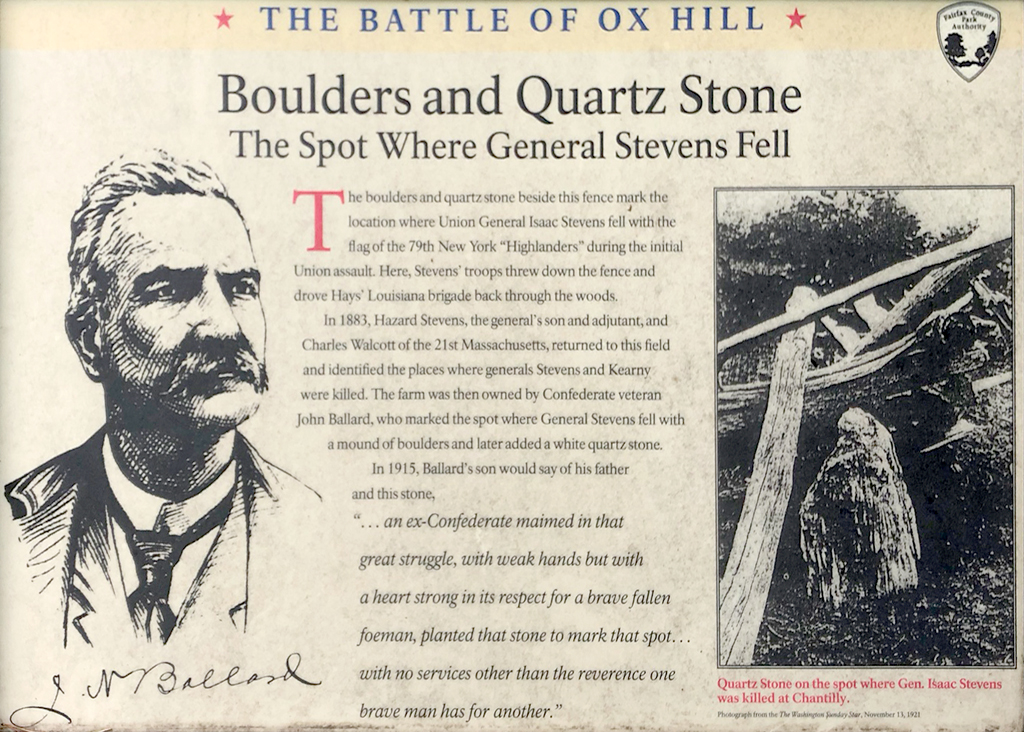
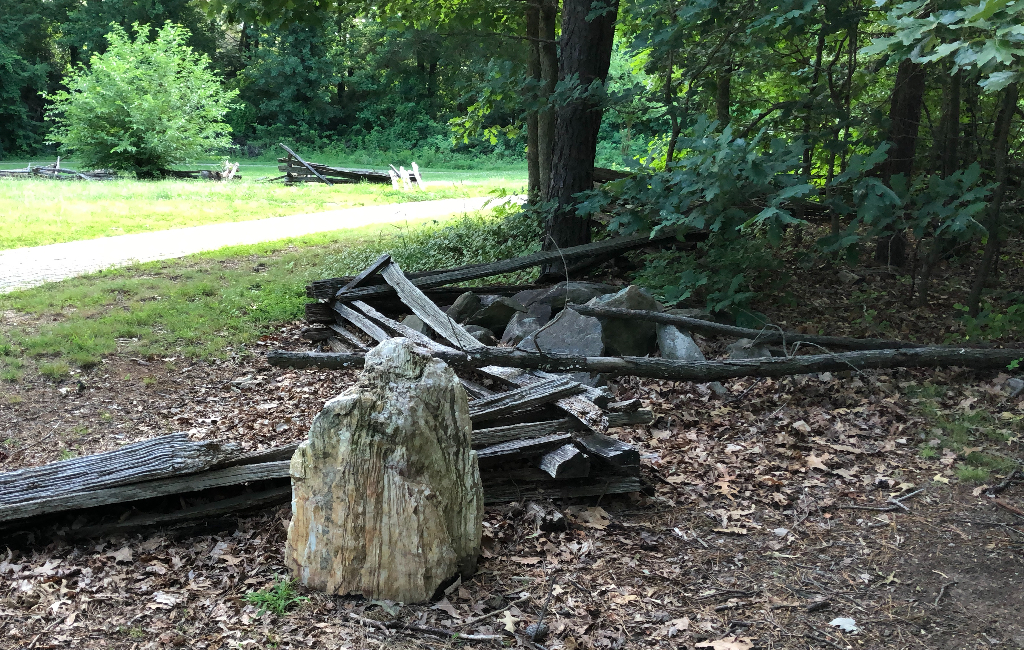
Kearney and Stevens Monuments wayside marker
Stop number 6. Location: 38° 51.912′ N, 77° 22.198′ W.
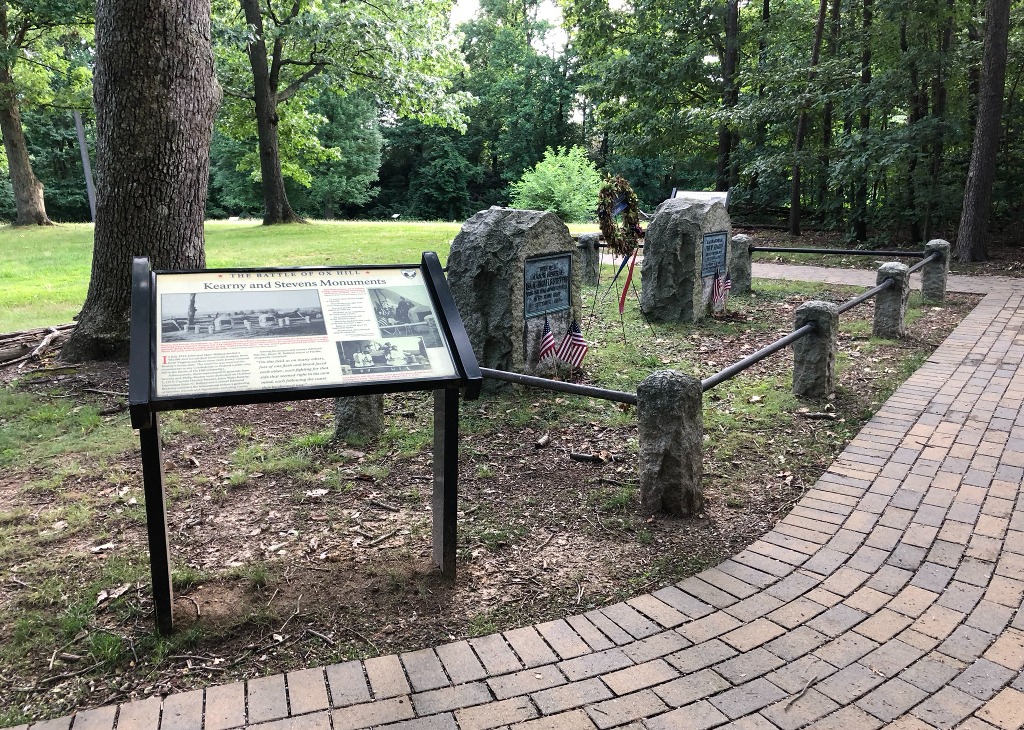
Kearney and Stevens Monuments
In July 1915, John and Mary Ballard deeded a 50×100-foot lot on their farm to six trustees, three from Virginia and three from New Jersey, General Kearny’s home state. The small lot was reserved for monuments to any Confederate or Federal soldier who fell in the Battle of Ox Hill (Chantilly).
Subsequently, these monuments to generals Isaac Stevens and Philip Kearny were dedicated on October 2, 1915. Captain Hazard Stevens, John Watts Kearny, Lieutenant John N. Ballard and Colonel Edmund Berkeley unveiled the monuments before a gathering of families, friends and dignitaries, including Union and Confederate veterans.
Among the prayers and oratory delivered that day, James W. Ballard, mayor of Fairfax, eloquently remarked:
“On this field as on many other, foes of one flesh and blood faced each other, each fighting for that side that seemed right in his own mind, each following the cause that he deemed just.”
Captions from the photographs:
“John Watts Kearny, son of General Kearny, addressing the assembled at dedication ceremony, Oct. 2, 1915.”
Original photograph, Kearny Town Historian, Kearny, NJ
“Lucy Kearny Hill (front right), great granddaughter of Gen. Kearny, reciting the poem “Kearny at Seven Pines,” Oct. 2, 1915.”
Original photograph, Kearny Town Historian, Kearny, NJ
O, evil the black shroud of night
at Chantilly,
That hid him from sight of his
brave men and tried!
Foul, foul sped the bullet that
clipped the white lily,
The flower of our knighthood,
the whole army’s pride!
Yet we dream that he still,—
in that shadowy region
Where the dead form their ranks
at the wan drummer’s sign,—
Rides on, as of old, down the
length of his legion,
And the word still is Forward!
along the whole line.
Last stanza of “Kearny at Seven Pines”
by Edmund Clarence Stedman
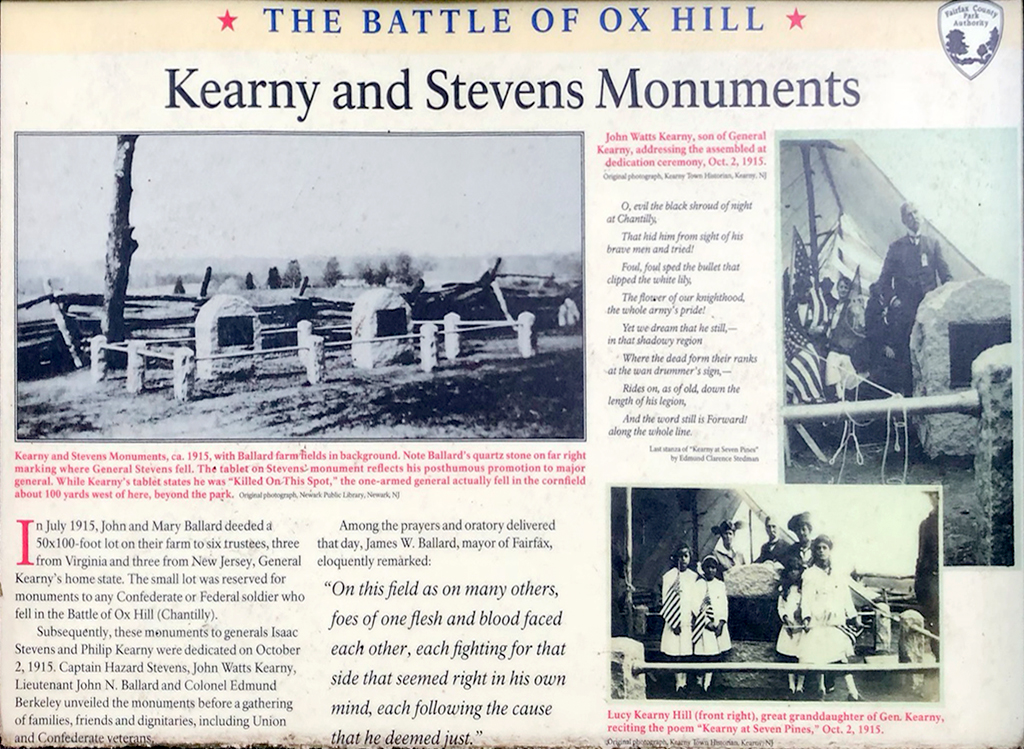
Kearney’s Stump and the Monument Lot wayside marker
Stop number 7. Location: 38° 51.91′ N, 77° 22.197′ W.

Kearney’s Stump and the Monument Lot
The history of this small granite monument, marked simply “Kearny’s Stump,” is a mystery. According to tradition, a tree stood here at the time of the Ox Hill battle that subsequently became known as the “Kearny Tree.” It was said to be either the place where General Kearny was killed, or where his body lay after the battle ended. Both of these scenarios are doubtful.
Kearny was definitely killed in the cornfield west of here. The Confederates recovered his body and took it to Stonewall Jackson’s headquarters near Chantilly. It is known, however, that General Stevens was killed in this immediate vicinity, and his death may be the actual basis for the legend. The only certainty is, in 1915, the rotting tree stump, known then as “Kearny’s Stump,” became the focal point for the deed description of the 50 x 100 foot monument lot donated by John and Mary Ballard. The stump was then replaced by this permanent monument.
Caption below the illustration of the partition survey:
“After the death of Mary Reid Ballard in 1927, the Ballard farm was divided among the heirs. This partition survey shows the “Kearney stump” and the “Kearney & Stevens Monument Lot” on the 27.5-acre parcel allotted to Varina K. Byrne, the youngest

